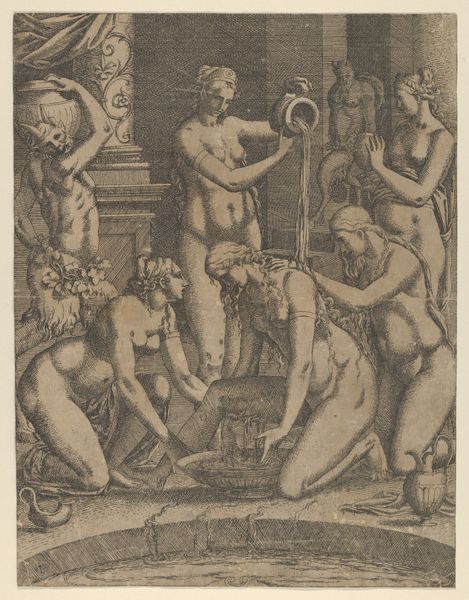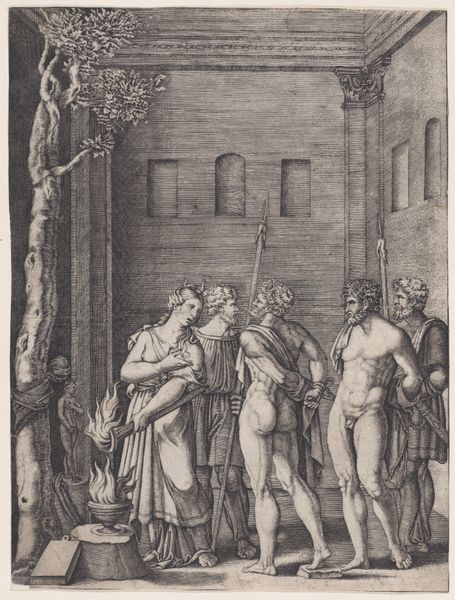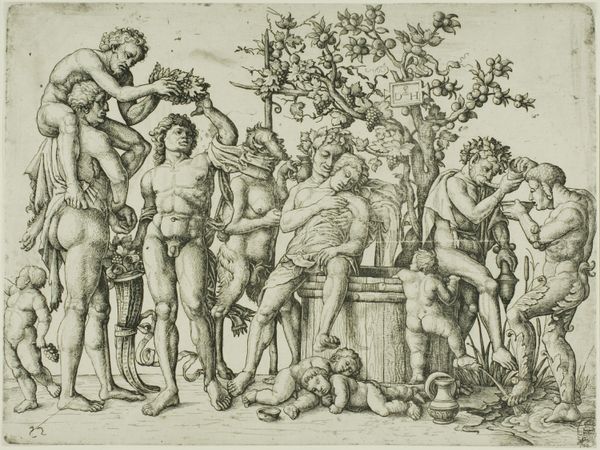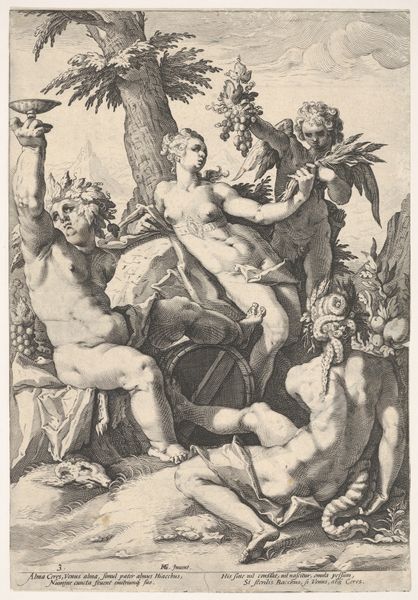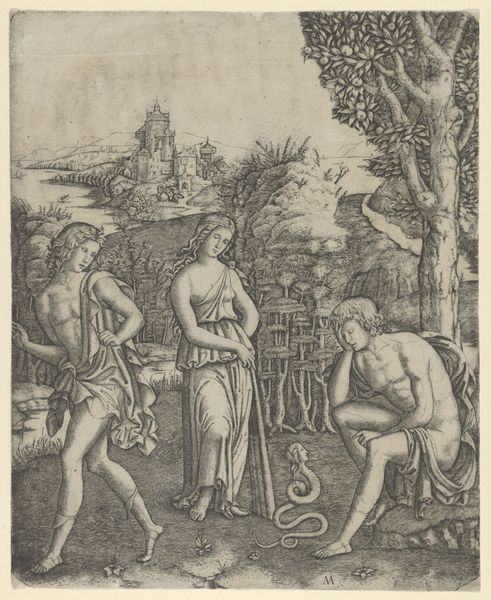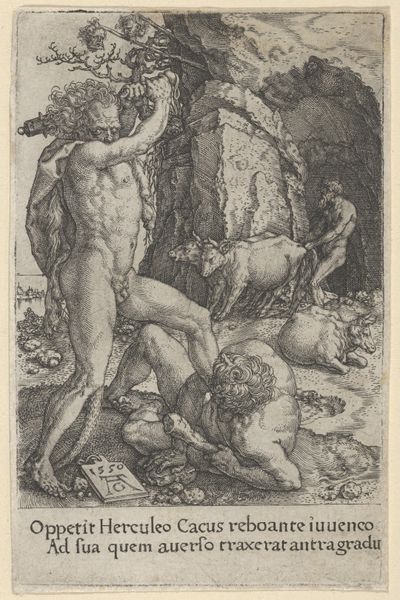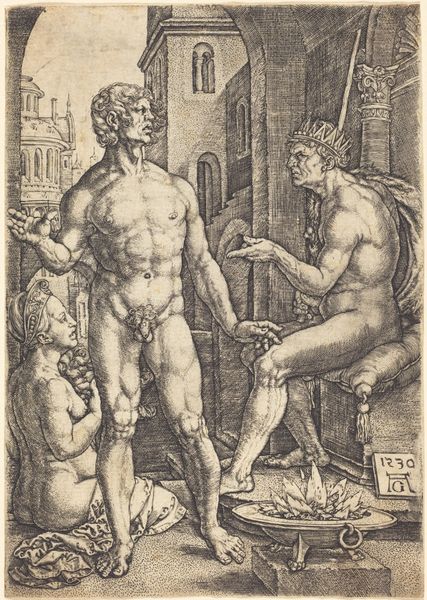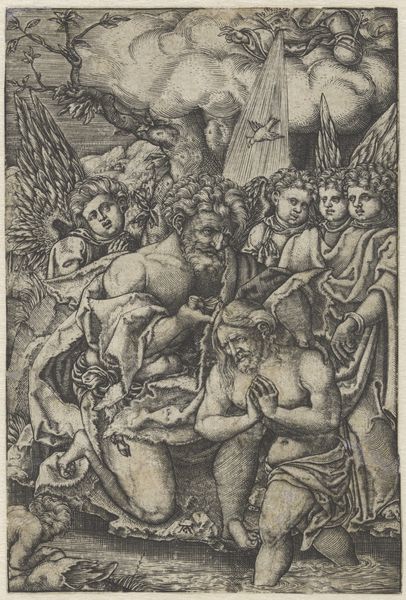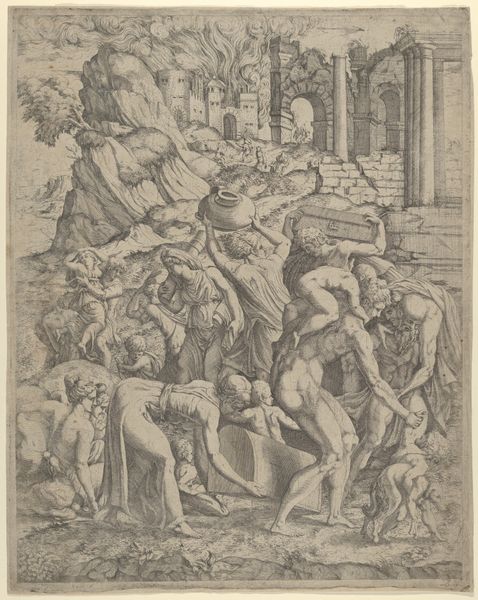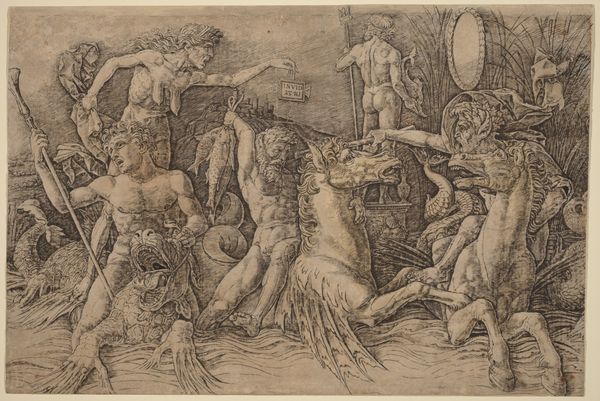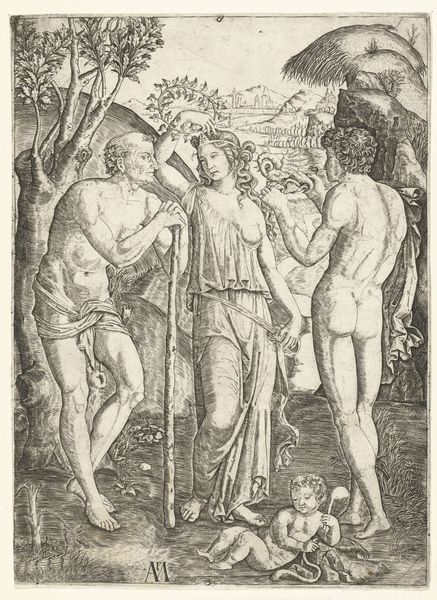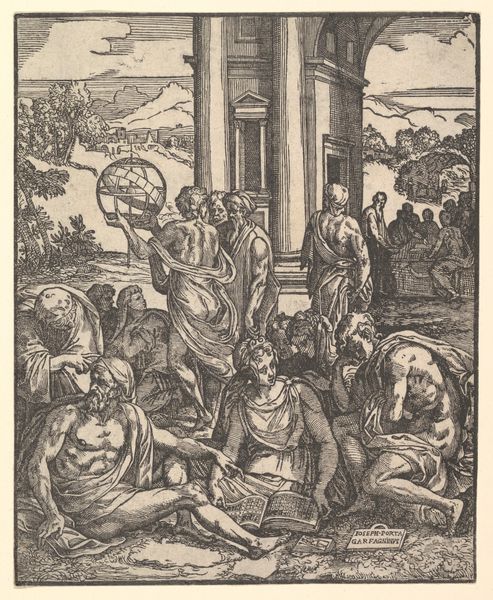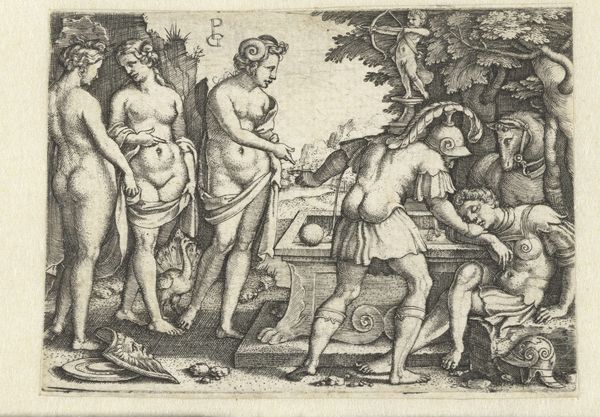
print, engraving
# print
#
mannerism
#
figuration
#
coloured pencil
#
history-painting
#
italian-renaissance
#
nude
#
engraving
Copyright: National Gallery of Art: CC0 1.0
Curator: This engraving from 1534 by Master IS, presents the “Judgment of Paris,” a classic mythological scene. Editor: It strikes me immediately how the artist uses line to create texture and volume, almost like a sculptor working in relief. Curator: Absolutely. The medium itself, printmaking, was becoming more widespread at this time, and this work speaks to that shift, capturing a pivotal moment for disseminating images and ideas, particularly classical narratives. Considering that printmaking at this time made art accessible to wider audiences, what cultural implications might this have triggered, specifically regarding beauty standards as perceived by the three goddesses? Editor: Well, observe how the lines are denser in the foreground, drawing your eye to the interaction of figures and, creating a powerful depth and narrative engagement. How do you think Master IS uses classical mythology to reflect back on the sociopolitical happenings of his time? Curator: It’s impossible to ignore the socio-political milieu, it is my firm belief that artwork never emerges in a vacuum. The Renaissance saw both the revival of interest in classical art, but at the same time it mirrored an era marked by expanding patronage networks, which profoundly affected the rise of printmaking and dissemination of knowledge, including Greek and Roman tales of morality, wisdom, and of course beauty. In essence, by choosing and manipulating themes like the “Judgment of Paris” that has the trope of judging or adjudication, Master IS subtly comments on power and authority dynamics between artists and patrons within his society. Editor: True. Considering the meticulous detail of this print, there seems to be a strong emphasis on detail that gives a timeless feel. I think it provides us with a clear formal perspective regarding aesthetics— the Renaissance emphasis on realism achieved through graphic skills. The rendering of light and shade, especially across the three goddesses, and the landscape itself with that strange column architectural style create this depth and enhance the storytelling, even while lacking color. Curator: Yes. The piece invites contemplation of not just aesthetic criteria, but cultural values as well. This examination reveals potential biases within the male-dominated power structures embedded within artistic expression itself and reminds us how essential it is for everyone— particularly creators and viewers to question our preconceptions about gender norms expressed outwardly via the medium. Editor: Precisely. It underscores just how powerful the use of light and dark, form and space are and their potential impact on influencing perspectives when used by keen artists.
Comments
No comments
Be the first to comment and join the conversation on the ultimate creative platform.
